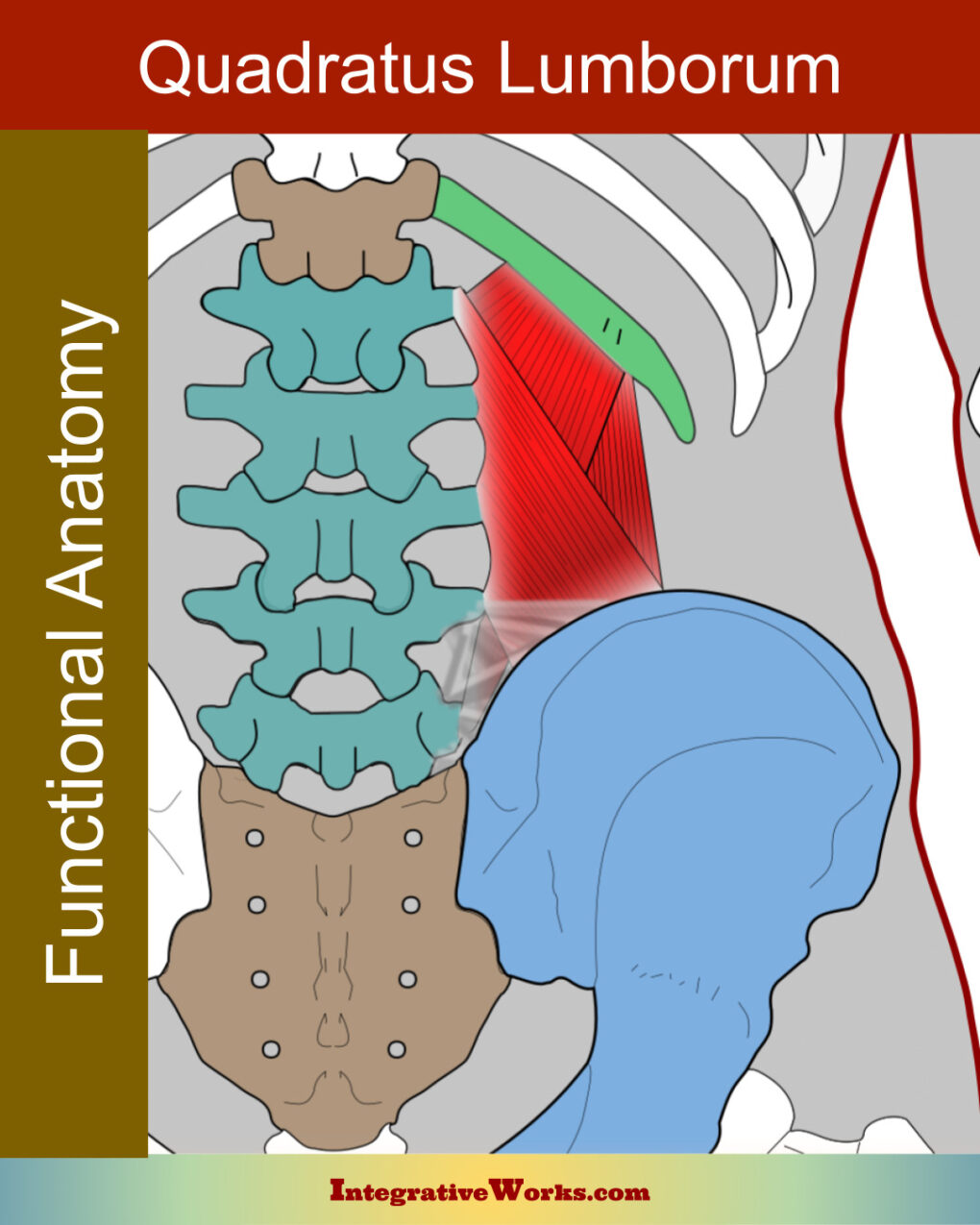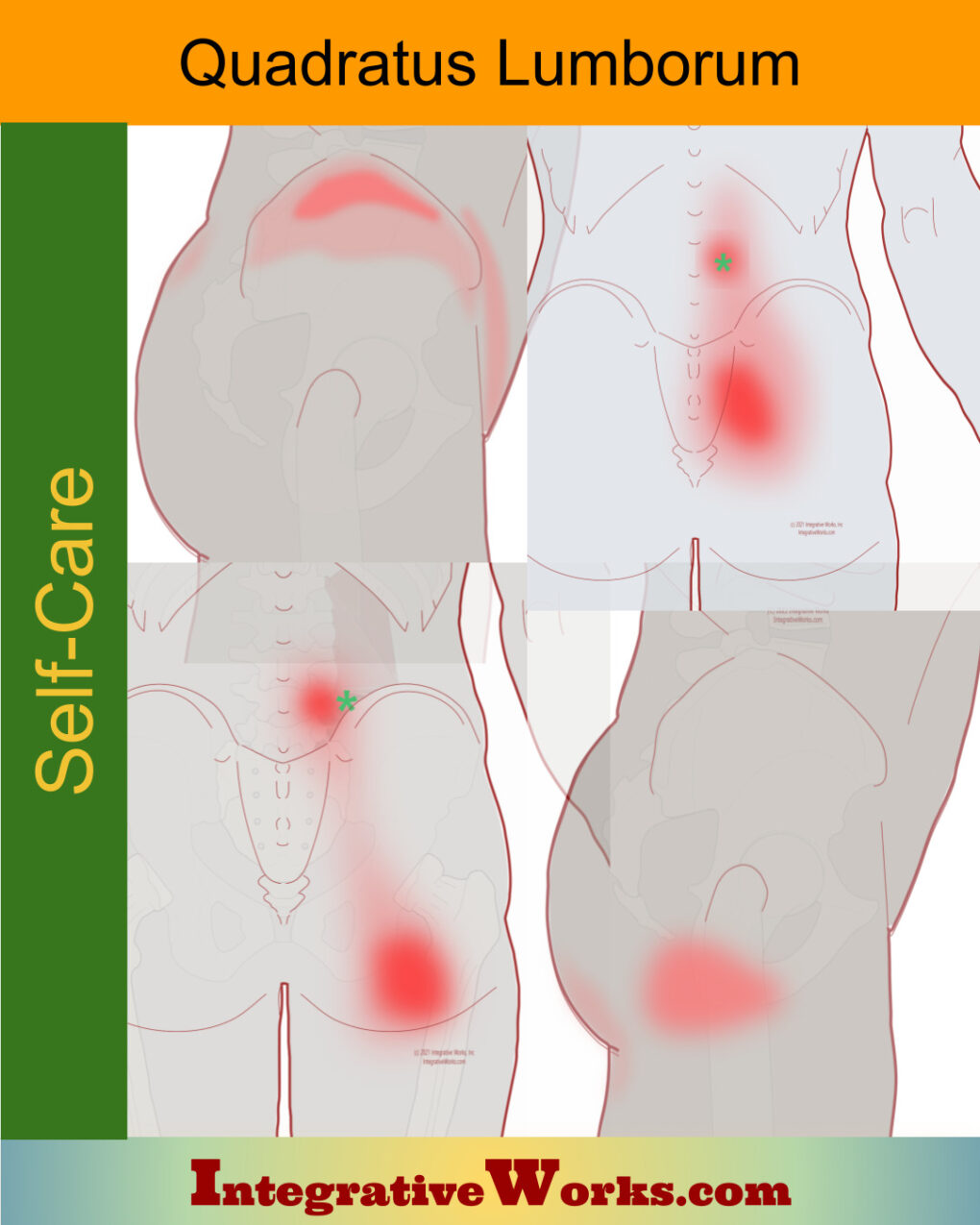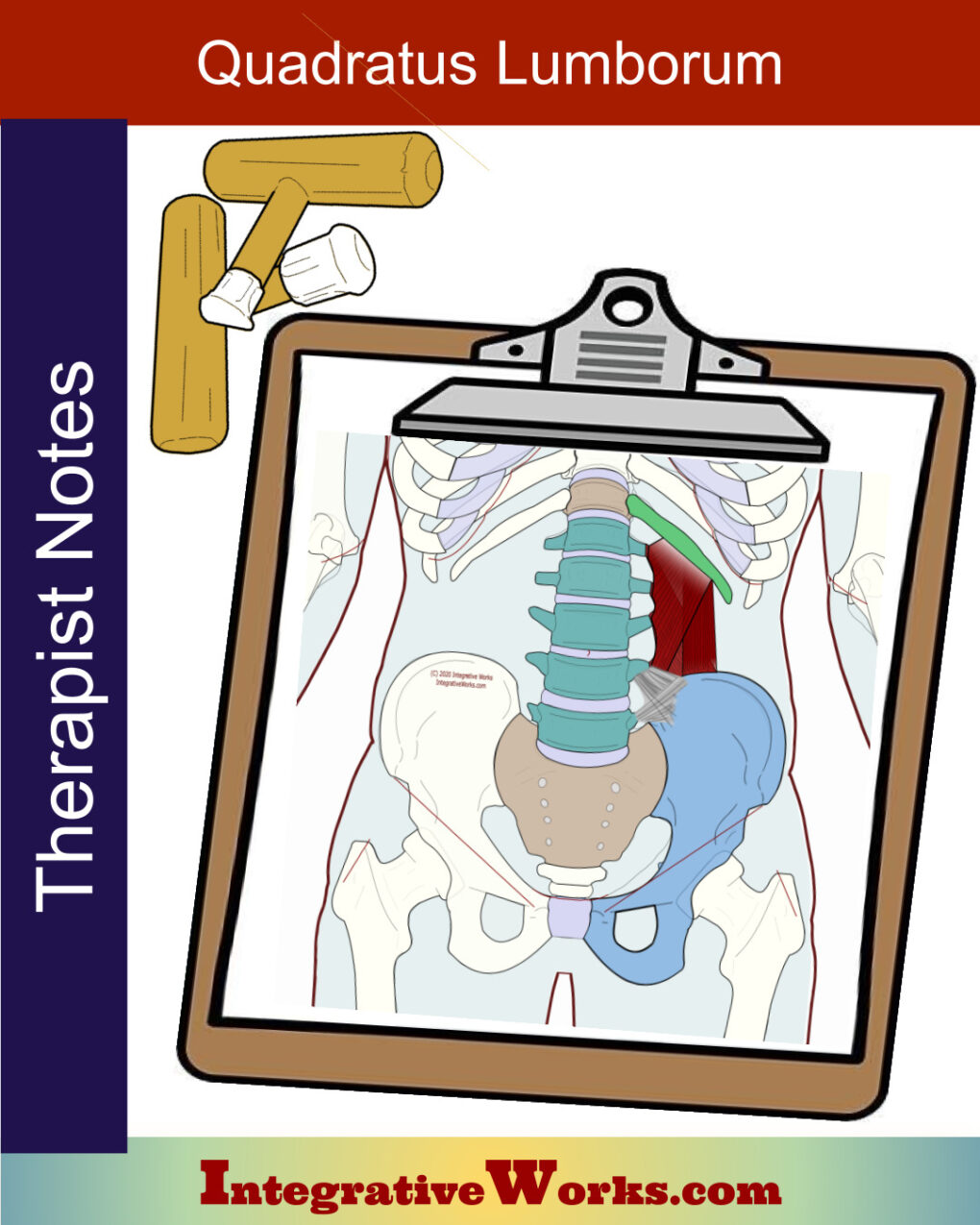Table of Contents
- How People Describe This Pain Pattern
- How You Activate and Intensify This Pain Pattern
- Self-Care – Getting Relief on Your Own
- Musculoskeletal Anatomy Behind Your Pain
- Therapy Notes for Massage and Bodywork
How People Describe This Pain Pattern
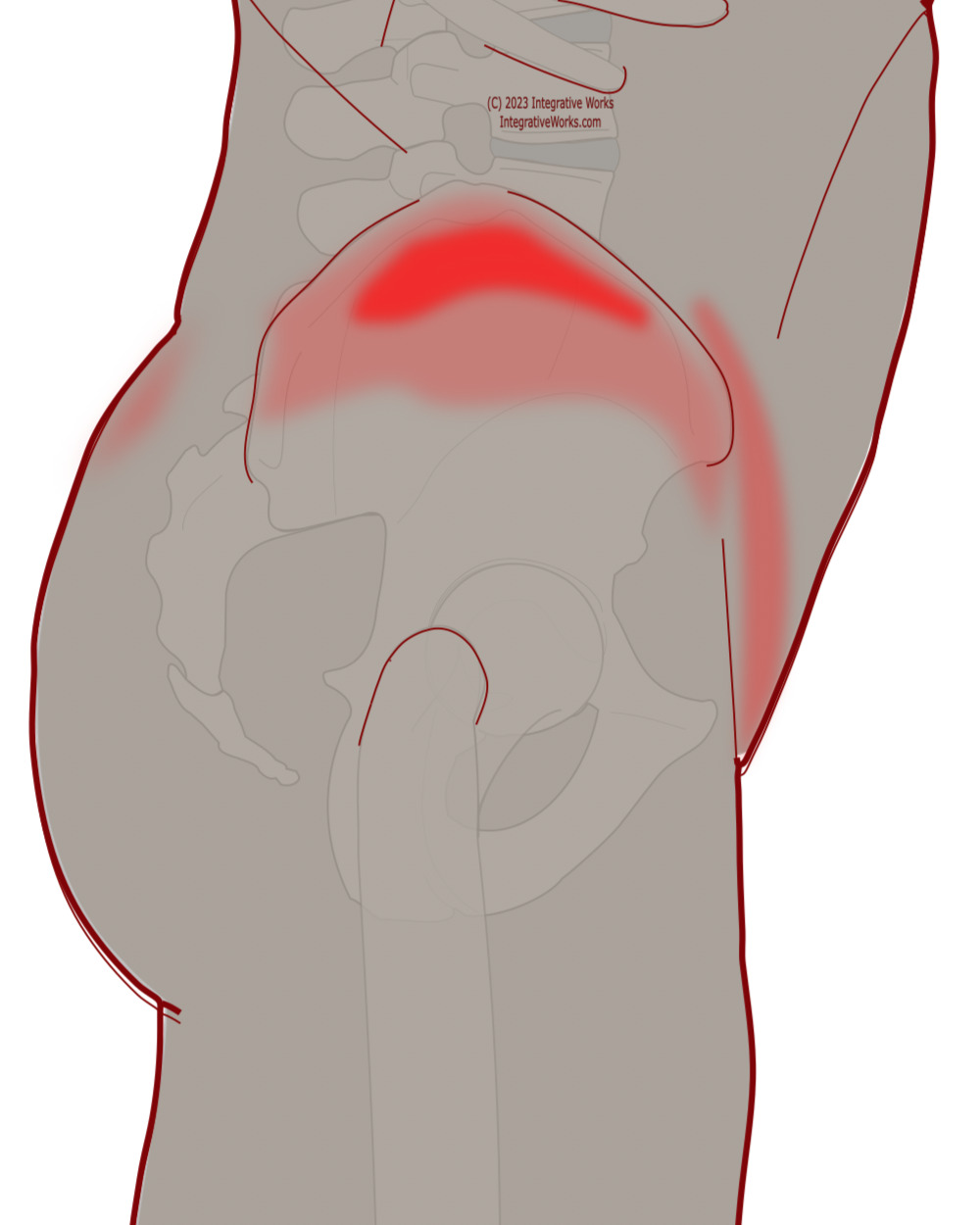
Pain around the Crest
Most often, people complain of pain just under the crest of the hip. However, they sometimes complain of pain that arcs in front of the hip and into the groin. If they are comfortable doing so, they will complain of pain in the groin and genitalia. Infrequently, they complain of pain in the SI joint.
This pain tends to be constant and, at times, intense. Most QL trigger points bother the person when bending forward. Instead, this one hurts more when bending forward and to the side.
Been There, Fixed That
This is one of the trigger points that bothered me in my 20s and early 30s. I remember how it would shoot around the hip and into the groin when I would step out of the car onto one foot. It made me think that there was some internal organ problem. I would be so relieved when my massage therapist or chiropractor worked on me, and the whole pattern would disappear.
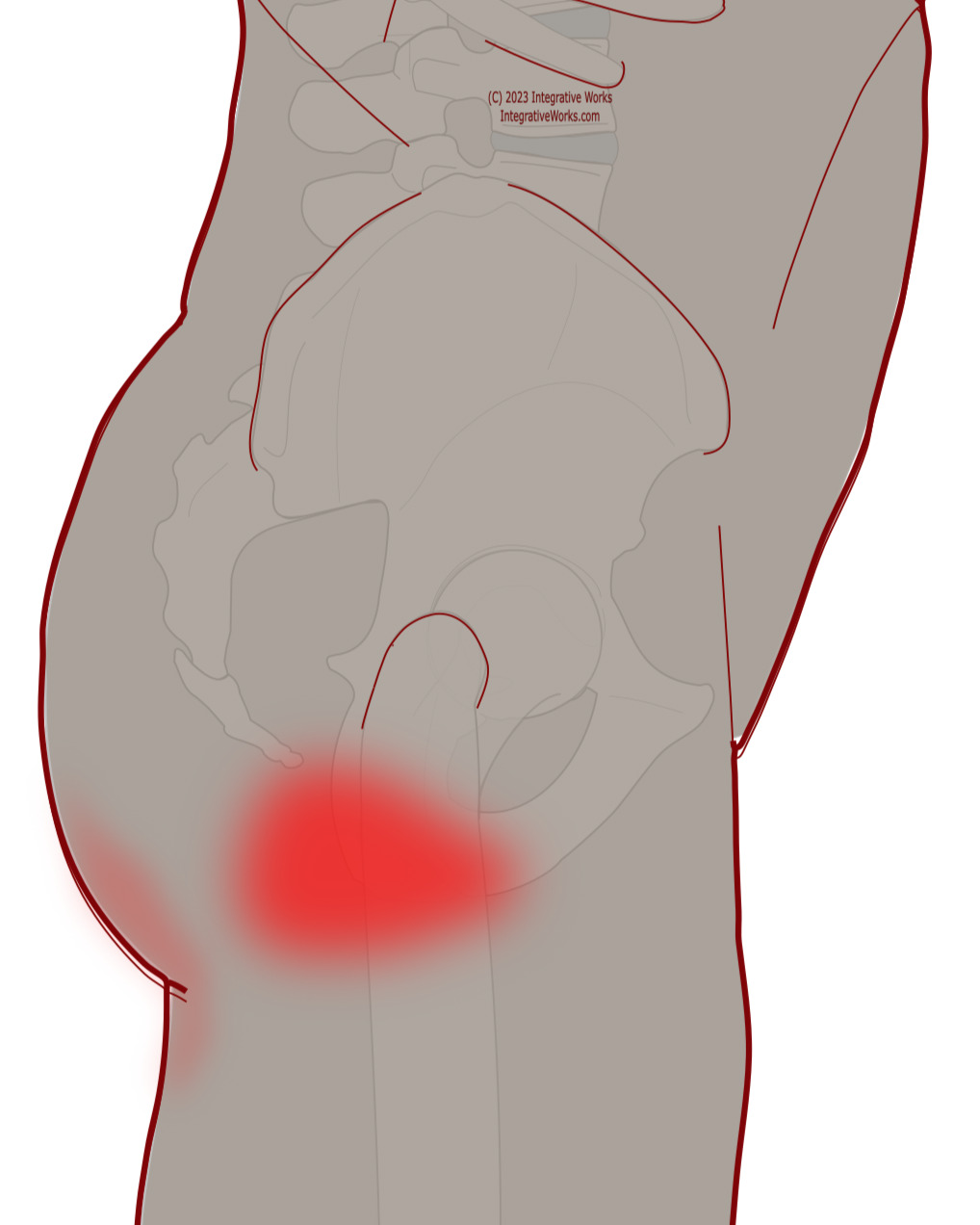
Pain in the Hip Joint
Less frequently, people complain of pain at the hip joint but touch the outside of the hip. There are other patterns that refer more directly to the hip joint. Like the previous pattern, they also have a stiff low back. Sometimes, along with the hip pain, they indicate soreness at the base of the buttock.
How You Activate and Intensify This Pain Pattern

Teetering
This pain, along with a stiff low-back, commonly occurs just after performing a task that involves teetering front to back and side to side. The client often has trouble naming the activity of onset. Still, when they do, it has an unusual twisting motion like reaching up and back to pain a gutter or a particularly strenuous yoga pose that twists forward when the back is already a bit stiff.
Perfect Storm
This picture is a classic activity of injury. It has all the right elements. He is slightly bent forward, managing a relatively bulky piece of equipment that will sway and jump over uneven terrain. Dropping the head forward to watch the work makes the low-back joints less stable and more vulnerable.
The Musculoskeletal Anatomy Behind Your Pain
Musculoskeletal Anatomy
This post on anatomy contains standard information about the origin, insertion, function, and innervation of muscles. Additionally, it includes information on functional considerations and anomalies.
Find Related Posts
Anatomy posts have a grid of all related posts. This includes posts on pain patterns, self-care, therapy notes, NMT protocols, cranial techniques, and cases.
Getting Relief on Your Own
Clinically Proven
Self-Care Strategies
Self-Care Posts have common sections to make them easy to follow and understand:
- Activities to Avoid or Change
- Strategies for Quick Relief
- Stretches and Exercise for Longer-Lasting Relief
- Yoga Corner
Therapy Notes for Massage and Bodywork
Better Bodywork
Through Shared Expertise
Therapy Notes provide details for cranial, spinal, and local joint work. These notes also link to a traditional neuromuscular protocol.
By treating integrative components first, direct work on the muscle becomes less intense while providing longer-lasting relief.
Support Integrative Works to
stay independent
and produce great content.
You can subscribe to our community on Patreon. You will get links to free content and access to exclusive content not seen on this site. In addition, we will be posting anatomy illustrations, treatment notes, and sections from our manuals not found on this site. Thank you so much for being so supportive.
Cranio Cradle Cup
This mug has classic, colorful illustrations of the craniosacral system and vault hold #3. It makes a great gift and conversation piece.
Tony Preston has a practice in Atlanta, Georgia, where he sees clients. He has written materials and instructed classes since the mid-90s. This includes anatomy, trigger points, cranial, and neuromuscular.
Question? Comment? Typo?
integrativeworks@gmail.com
Interested in a session with Tony?
Call 404-226-1363
Follow us on Instagram

*This site is undergoing significant changes. We are reformatting and expanding the posts to make them easier to read. The result will also be more accessible and include more patterns with better self-care. Meanwhile, there may be formatting, content presentation, and readability inconsistencies. Until we get older posts updated, please excuse our mess.

